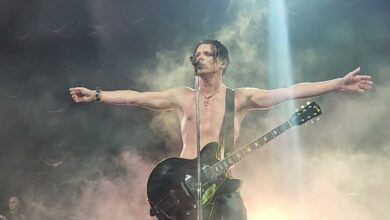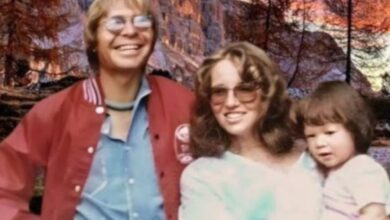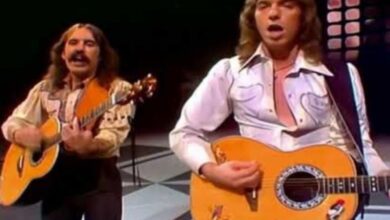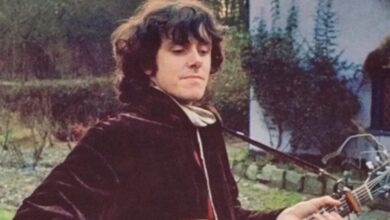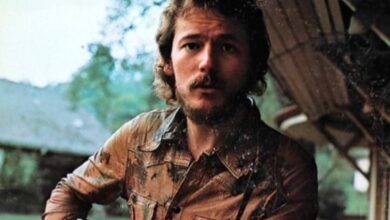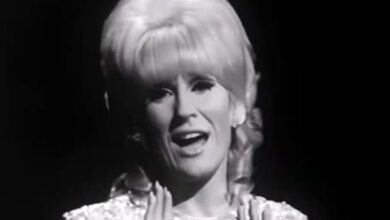Lady Gaga’s “Abracadabra / Dead Dance” at the 2025 VMAs Shines as a Joyful Spectacle
Lady Gaga’s appearance at the 2025 Video Music Awards felt like a cheeky love letter to spectacle itself, the kind of performance that reminds you why live pop culture moments matter. Even though her segment was pre-taped, the energy was anything but canned. She broadcast in from her sold-out Madison Square Garden show, folding arena-size drama into awards-show mythology and turning a routine medley into a glittering pop vignette that radiated joy.
The opening notes of “Abracadabra” floated in over an opera-theater tableau, and there she was—perched like a queen atop a voluminous crimson ballgown that looked Tudor by way of runway fantasy. The whole scene felt knowingly theatrical and wonderfully playful, as if she were inviting the audience to suspend disbelief and lean into the magic trick. This was the Gaga promise in action: couture, character, and big, undeniable hooks delivered with a wink.
From there, the cameras swooped in and the room seemed to breathe with her phrasing. “Abracadabra” isn’t just a chantable title—it’s a mission statement. She teased out little melodic curls, let the beat bloom, and built tension so that each swell felt like a curtain rising. You could practically feel the MSG crowd pushing the performance forward, turning the VMAs feed into a live-wire relay of noise, movement, and sheer delight.
Then came the pivot that made the night feel special. With a crack of momentum, Gaga slipped into “The Dead Dance,” a brand-new single that embraces gleeful spookiness without ever losing the glitter. It’s disco in a haunted ballroom, the kind of track that makes you grin while your shoulders start to move on their own. Switching to an eerie white Victorian look, she kept the spirit bright and mischievous—more carnival than crypt.
That visual contrast was half the fun. Scarlet grandeur gave way to porcelain pallor, and the camera drank in every detail: doll-like curls, antique lace, and the sort of cracked-china makeup that reads cinematic at any distance. It’s the playfulness that sells it—never grim, always winking—like a Halloween party where the lights stay up and the dance floor never empties. The mood was spooky-cute, and the crowd joyfully followed.
Choreography turned the concept into a party. The dancers moved with sharp, elastic rhythms—snapping to the groove, then loosening into full-tilt disco release. Gaga met them step for step, never treating the theatrics as a mask but as an amplifier for the feel-good pulse underneath. If “Abracadabra” set the stage, “The Dead Dance” was the confetti cannon that sent everyone over the edge.
The line that framed the whole moment—“The category is dance or die”—landed like a dare and a celebration. It’s Gaga at her most generous, welcoming everyone onto the floor with a grin that says joy is the point. You don’t have to choose between high fashion, big vocals, and sweaty catharsis; you can have it all, right now, boots stomping and arms up.
There was also a sweet sense of continuity. Gaga has long been a VMA architect—think “Paparazzi,” that mask-and-medley glow with Ariana, and a career of stagecraft that keeps evolving. Here, she honored that lineage while keeping it breezy. No need to reinvent every wheel when you can spin a fresh one and ride it straight into the night with a smile.
Musically, the pairing made perfect sense. “Abracadabra” offers the incantation—sleek, catchy, a little glam—while “The Dead Dance” kicks the doors open to neon-lit mischief. Together, they feel like two pages from the same storybook: spell, then celebration; spark, then fireworks. It’s theatrical sequencing that still plays like pure pop.
The MSG staging helped it all feel big without losing warmth. Crowd roars tucked under the mix, close-ups of delighted faces, that giant skirt unfurling as if the stage itself were exhaling—these little choices kept the energy airy and upbeat. You could sense the crew and orchestra breathing with her, a joyful machine humming in perfect time.
Costuming did more than dazzle; it told jokes and shared secrets. The red gown said “diva of the opera,” the white ensemble whispered “ghost with rhythm,” and together they joked, “we came to haunt the dance floor.” Each look felt iconic but approachable, like a dress-up box open to anyone willing to play along.
What really carried the performance, though, was the smile in the music. Even the gothic flourishes were lit with disco joy, that buoyant kick drum inviting you to move before you’ve even decided to. It’s the signature Gaga trick: embrace the weird, polish it until it gleams, and let the beat hold the door open for everyone.
There’s also the thrill of timing. Tying the VMAs moment to a live tour stop kept the performance electrically current—part broadcast event, part tour souvenir. It captured the whoosh of a show already in motion and shared it with a global audience, a happy marriage of pop logistics and pop generosity.
As a celebration of craft, the medley sparkled. The camera blocking, the dancers’ grins, the costume changes with narrative purpose, the way the vocal sat up in the track—everything worked toward the same sunny idea: that spectacle can feel personal if you let the joy steer. It’s not just big; it’s big-hearted.
And as a celebration of audience, it sang even louder. You could feel the fans’ affection bouncing back at her, the kind of communal loop that makes award-show history. Joy is contagious when an artist believes in it this much, and by the final chorus, it felt like the most natural thing in the world to be smiling at a TV.
When the last beat hit, the takeaway was simple: fun wins. The medley didn’t ask to be decoded; it asked you to dance. It offered glamour without distance, concept without homework, and a pop star fully in on the joke that life is better when the chorus is huge and the costumes have a punchline. What a happy, generous way to light up the VMAs.
